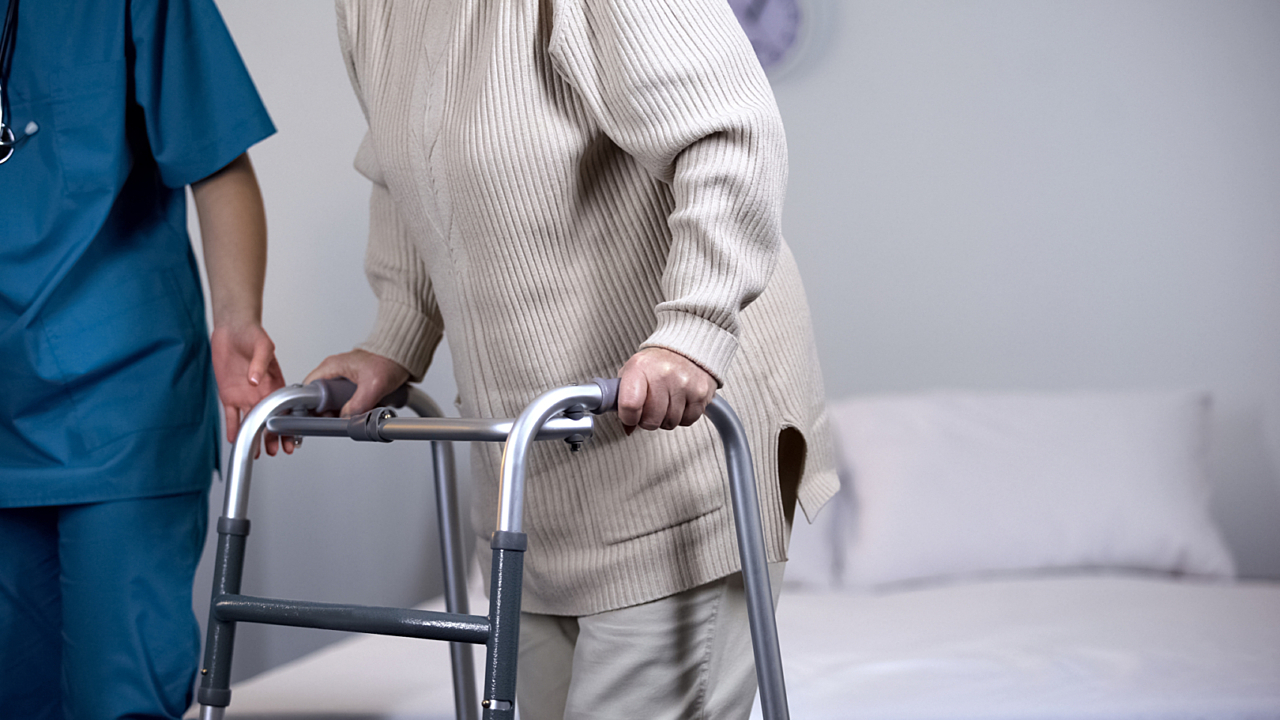Australia’s largest annual hip fracture report shows significant national improvement in hospital pain management and early rehabilitation for people being treated for a broken hip.
The 2019 report from The Australian and New Zealand Hip Fracture Registry (ANZHFR) at Neuroscience Research Australia (NeuRA) provides information on all 96 public hospitals operating on hip fracture patients in Australia.
It shows 87% of patients in Australia receive a nerve block injection to help manage pain after a hip fracture, up from 59% when annual reporting began in 2015. Hospitals have also improved early rehabilitation activities, with 91% of patients now being offered treatment to get out of bed and start walking the day after surgery. This is an increase from 85% in 2015.
“Being able to better manage the pain associated with the fracture and helping people to walk sooner after surgery will enable patients to recover more rapidly,” said Professor Jacqueline Close, Co-Chair of ANZHFR.
Hip fracture is the most serious and costly fall-related injury suffered by older people. More than 20,000 people across Australia break their hip each year, with the cost to the economy approximately $1 billion annually.
However, the report shows that some hospitals are failing to operate on people within 48 hours of the injury occurring, which causes unnecessary pain and discomfort for hundreds of patients.
“The data shows some hospitals must do more to ensure there is enough operating theatre time for surgeons to treat patients within adequate timeframes,” said Professor Ian Harris, Co-Chair of ANZHFR.
Perth’s Fiona Stanley Hospital (FSH) conducts the most hip fracture operations by volume across Australia. FSH had the lowest time to surgery, alongside Perth’s Sir Charles Gairdner Hospital and Royal North Shore Hospital in NSW.
“For hip fractures the ‘magic figure’ is within 48 hours from time of first presentation to surgery,” FSH Orthopaedic Surgery Co-Head Andrew Mattin said.
“During 2018, 93% of FSH’s hip fracture patients got to surgery within 48 hours. We have become a centre for excellence in hip fracture care and an international exemplar for hip fracture treatment,” he said.
ANZHFR has today also released new guidance for patients to help them recover following hip surgery.
“We have found that patients don’t have access to simple and consistent guidance once they leave hospital. We have developed a Hip Fracture Care Plan, which is a small booklet that will be available at hospitals to give patients information about recovery after a fracture and what they can do to prevent another fracture in the future” said Professor Jacqueline Close.
A quarter of Australia’s hip fracture patients are aged 90 years and older and the number of hip fracture patients aged under 80 is increasing due to the nation’s aging population.
The full report is available here: https://digital.neura.edu.au/?c=182&k=6ba8a28ced
Media contacts:
David Crisante, NeuRA Media Manager | 0433 943 014 | email hidden; JavaScript is required
Ellie Pavlov, Marketing Executive, Ingham Institute for Applied Medical Research l 0459 257 256 l email hidden; JavaScript is required
Sandy Oliver, SMHS Media Coordinator, Fiona Stanley Hospital | 0424 148 551 | email hidden; JavaScript is required




